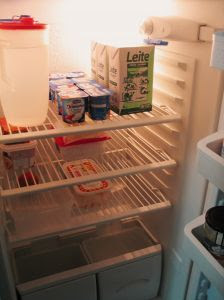The cooling system in a refrigerator is probably one of the most important inventions man has created. This technology, which is currently a typical fixture in modern society, has created a terrific effect not only in the realm of food storage, but even in medicine, science, technology, and even in recreation and culture. Refrigerators are utilized presently both in small-scale applications in the home, to large-scale storage in manufacturing facilities. However, it is very important note the distinctions between refrigerators for non commercial use and industrial refrigeration. Australia experts believe that the option in refrigerant for each is determined by a lot of factors, which includes the size of the device to be employed, safety measures, as well as the area to be cooled.
There are plenty of qualities that refrigerator users have to take into consideration when choosing coolants for commercial refrigeration or perhaps simple domestic use. The most important among these qualities is the boiling point of the refrigerant. Typically, compounds with a boiling point that's below the target temperature are best for cooling, whereas those with an increased boiling point are certainly more effective in smaller systems. The boiling point is essential since this ascertains how quickly the refrigerant turns into a vapour and thus, absorb heat and make a lower temperature. Together with a low boiling point, a good refrigerant must also have a high latent heat of vaporisation. This quality indicates the amount of heat the refrigerant have to absorb before turning into vapour.
Another refrigerant quality to be considered is safety, and this involves 2 qualities: toxicity and flammability. With regard to toxicity, refrigerants are classified into Class A (no toxicity in concentrations lower than 400 ppm) and Class B (with toxicity recognized). Flammability of refrigerants, however, is divided into three classes: Class 1 (totally non-flammable), Class 2 (somewhat flammable) and Class 3 (highly flammable). Ideally, a refrigerant has to be non-toxic and non-flammable. Refrigerators for non commercial use often come with Class A and Class 1 coolants, whereas commercial refrigeration could make use of higher class refrigerants because industrial companies commonly implement stricter safety measures.
Color and scent should also be taken into account when installing refrigerators. Refrigerants are usually colourless and odourless, but owners could add colour or make use of a refrigerant with a unique smell (like ammonia) for easy detection of leakages.
And lastly, companies that will make use of industrial refrigeration have to look into the stability of the refrigerant to be used. A good coolant should be stable; which means that it shouldn't react with any component of the cooling system, neither should it break down under the various pressures and temperatures of the system. This type of quality makes sure that the cooling system can be utilized for long periods without frequent repair service or replacement of components and devices.
Source: http://www.ammoniarefrigerationnsw.com.au/commercial-refrigeration is the leading industrial refrigeration specialists in Australia. They provide excellent designing, installing, monitoring and managing refrigeration plant.


No comments:
Post a Comment